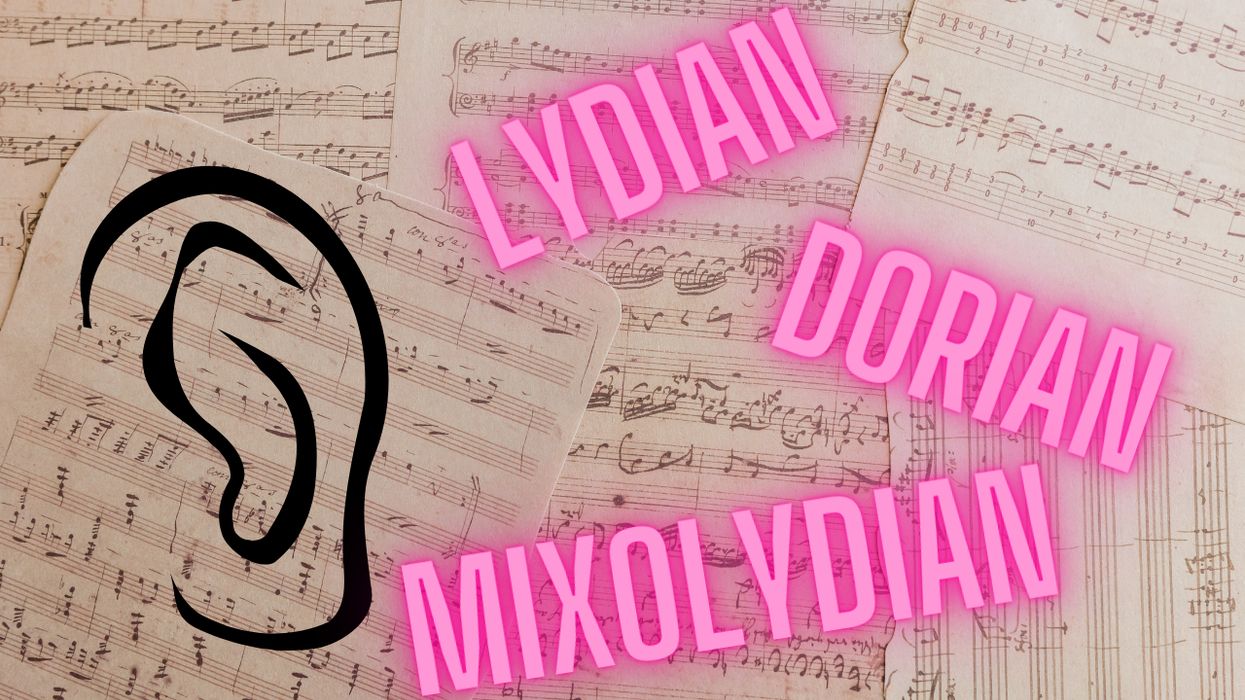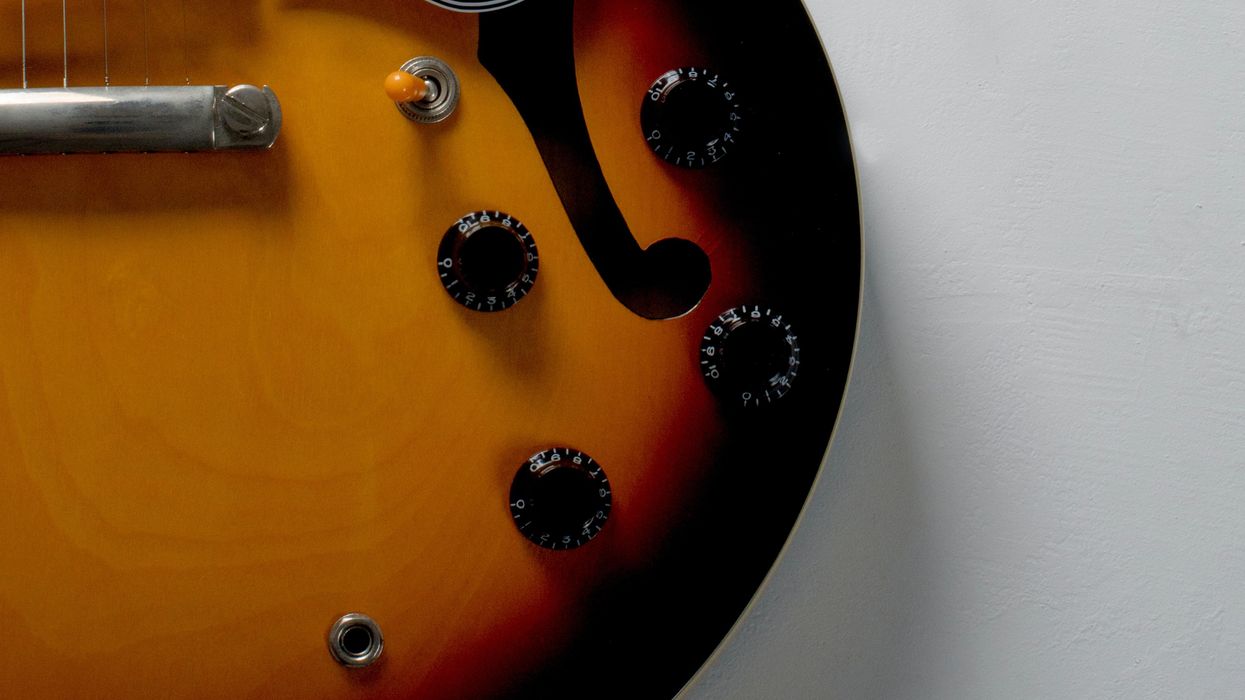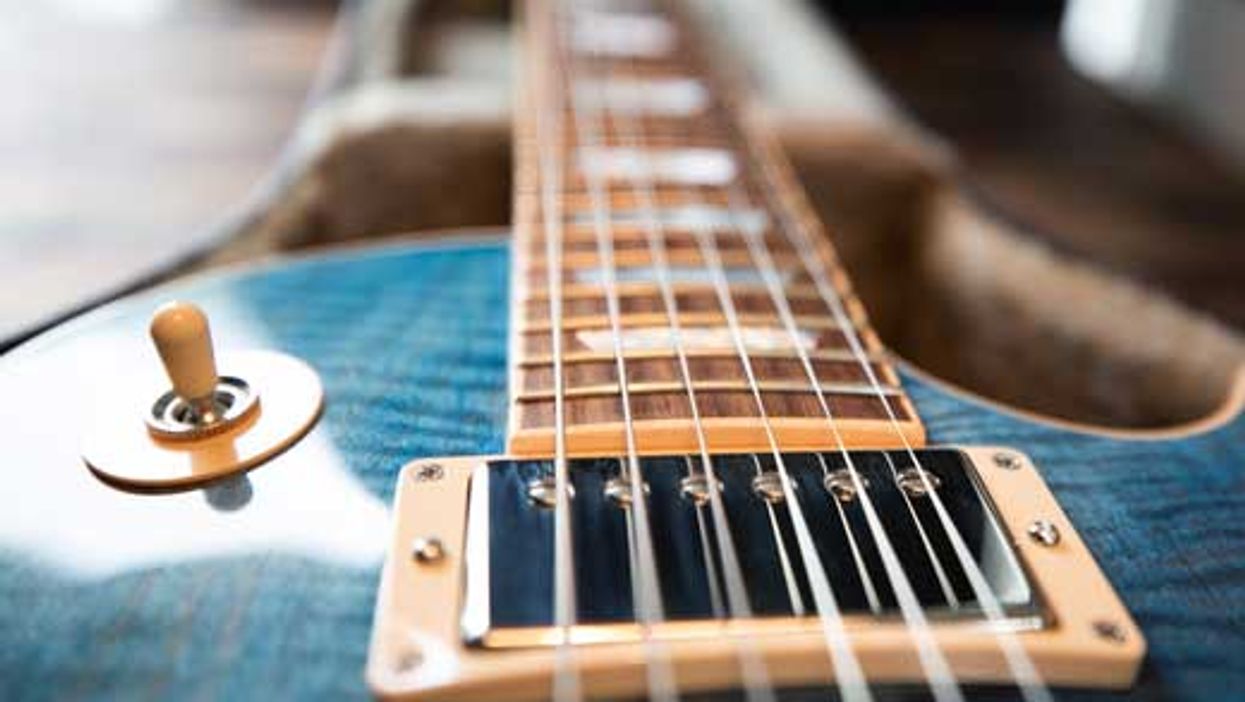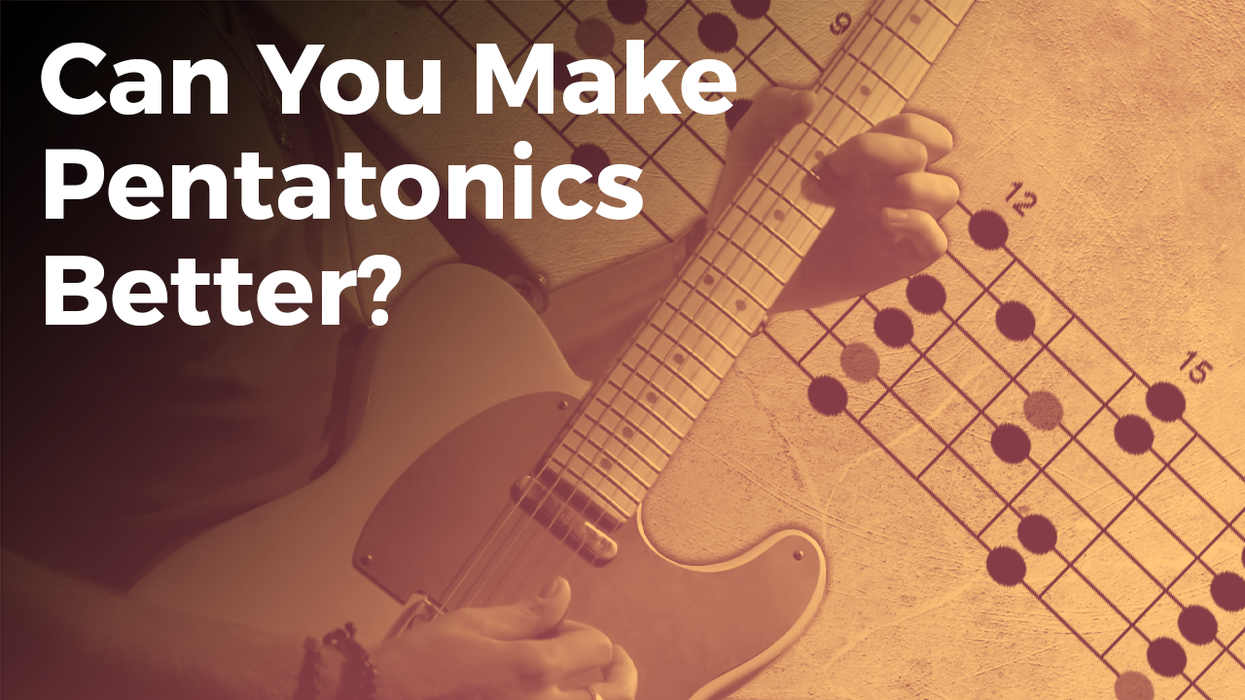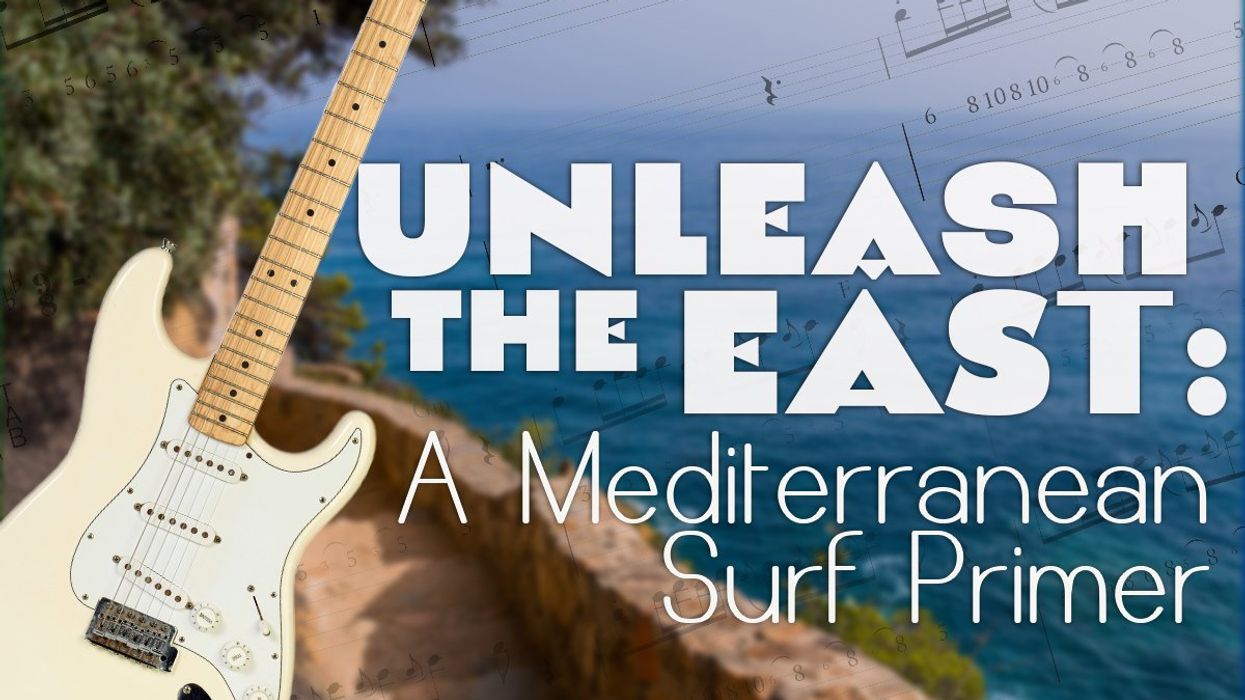This lesson assumes you already know your way around the diatonic scale and its various fingerings. Hopefully this will provide myriad tonal colors you have yet to utilize from within those same patterns. Most of us go through three steps before modal knowledge is of practical use.
Three Phases to Understanding the Modes
Phase 1
This is the introduction to the modes many of us receive:
The Ionian mode is the major scale.
The Dorian mode is a major scale starting on the 2nd degree.
The Phrygian mode is a major scale starting on the 3rd degree.
The Lydian mode is a major scale starting on the 4th degree.
The Mixolydian mode is a major scale starting on the 5th degree.
The Aeolian mode is a major scale starting on the 6th degree.
The Locrian mode is a major scale starting on the 7th degree.
While this is all true, once you memorize that the obvious question becomes, “Yeah, so what?” And that’s an excellent question. Since we’re always referencing a “parent” major scale, you can recycle your diatonic fingerings. You’ll also arrive at the correct answer on your test in guitar school—but it’s not anything that you’ll likely use to make actual music.
Phase 2
This phase provides a little more clarity. This explanation compares the difference in each mode from the basic major scale. In fact, most all scales are described relative to a major scale. For example, a major pentatonic scale is a major scale minus the 4th and 7th degrees.
The anatomy, or intervallic structure, of each mode is more clearly described via this explanation. It goes like this:
The Ionian mode is the major scale. (Old news from Phase 1.)
The Dorian mode is a major scale with a b3 and b7.
The Phrygian mode is a major scale with a b2, b3, b6 and b7.
The Lydian mode is a major scale with a #4.
The Mixolydian mode is a major scale with a b7.
The Aeolian mode is a major scale with a b3, b6 and b7.
The Locrian mode is a major scale with a b2, b3, b5, b6 and b7.
All of this is also correct but knowing this is still little more than a badge of honor in a round of Trivial Pursuit.
Phase 3
Phases 1 and 2 are useful for attaching these fancy names to collections of notes and knowing where to place your fingers. Phase 3 turns these abstract concepts into sounds that don’t require a slide rule or decoder ring to figure out what notes you’re supposed to play.
In Phase 3, we don’t trace each mode back to a major scale. Each mode is now its own thing. It’s its own key. It’s its own sound.
To get to this place of modal nirvana we need to be able to hear these scales as chords versus bothering with all of this math contained in the first two phases. Let’s make a chord progression, or vamp that aurally represents each modal sonority.
For our examples we will use an A pedal tone in the bass. A will be the tonic of each of our seven modes. We’ll begin with the A Ionian mode (A–B–C#–D–E–F#–G#). We’ll now take the IV and V chords and play them on top of the A pedal as in Ex. 1. (The written examples show a simplified version of what’s on the audio track. The point isn’t for you to copy my rhythm parts, but to easily understand the harmonic movements.)
This is a tidy package that you now play your major scale over. Record yourself playing this and then play the A major scale over it. This won’t require much ear stretching as you’ve likely heard this sound your entire life. This is a nice progression that is an effective chordal representation of the mode.
Ex. 2 utilizes the same method to achieve an A Dorian sound (A–B–C–D–E–F#–G). A Dorian’s parent scale is G Major. The IV and V chords of G major are C and D. Play the C and D triads over our A pedal tone and relish the Dorian vibe. Some might catalog this in their mind as having a Santana sound. While the notes are the same as those found in the key of G Major, we’re playing A Dorian. A is the root—not G. That is part of what we’re doing here: Relate to the scale on its own terms. Improvising on this vamp will reinforce that in your ear and you’ll have a recognizable sound vs. a formula.
The parent scale of A Phrygian (A–Bb–C–D–E–F–G) is F major. Seeing the method unfold? Take the IV and V chords from F (Bb and C) and superimpose them over an A bass note to arrive at Ex. 3. Assign your own adjective to the sound you’re creating.
Each of the modes has a distinct mood doesn’t it? It could be argued that the modes should be called the moods.
Next up is the A Lydian mode (A–B–C–D#–E–F#–G#). A Lydian is the fourth mode of E major so let’s take the IV and V chords, A and B, and play them over our A bass pedal (Ex. 4). You may associate this sound with the theme song from The Simpsons or Tom Petty’s “Here Comes My Girl.”
Have you noticed that even though our “bass player” has been playing a single note this entire time we are arriving at drastically different A sounds? This is how players like Joe Satriani and Steve Vai keep solos interesting over longer periods of time while the harmony is static. The harmony is changing via the soloists’ note choice and requires no one else playing chords.
Moving on to A Mixolydian (A–B–C#–D–E–F#–G) in Ex. 5. A is the 5th degree of a D Major scale and the IV and V chords of D are G and A. Jeff Beck’s “Freeway Jam,” the Beatles’ “Day Tripper” or just about anything from the Grateful Dead or other jam bands exemplify this sound nicely.
Next is the A Aeolian mode (A–B–C–D–E–F–G) or natural minor scale. This is another one with which your ear will be immediately comfortable. This is the relative minor key to C Major. The IV and V chords from C are F and G. Let your cat walk across the white keys of your piano while playing Ex. 6 and even that will sound great.
Last up is A Locrian (A–Bb–C–D–Eb–F–G). This key is derived from Bb Major, the IV and V chords are Eb and F respectively and we get the introspective Ex. 7. Play the A Locrian scale and finally enjoy this mode that may have seemed so ugly before. It’s a beautiful sound—use it!
Hopefully this lesson provides a different, more useful way of hearing the modes instead of memorizing a cryptic note formula. Each mode is now its own key, not just a major scale starting on a different degree. Spend time with each of these examples and really listen to each note. Sure, blasting scales at hyper-speed can be fun, but this is more of a listening thing. Go slow and enjoy your new-found mastery of the modes. Oh yeah, you can also recycle or give away all of those books that keep describing Phase 1.
